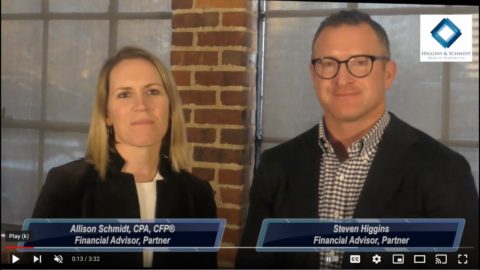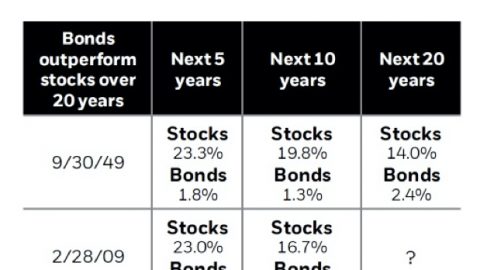Inflation: Settling In
Part 3: What if I need cash from my account?
By: Allison Schmidt, CFP®, CPA

First, a little background…2022 headlines and conversations have been dominated by inflation and for good reason. So far this year we’ve seen elevated inflation reads as high as 9.1%*, the highest we’ve seen in 40 years. The consistent discussions have lead to this blog series, which revolves around 3 main concerns: what happened 40 years ago, what have we been doing to address inflation, and what to do if a client needs to take cash out of their account. In part one, Inflation: The punch we saw coming, we addressed the history of inflation and the S&P 500 returns over various time frames. In part two, Inflation: Punching Back, we addressed our response to inflation and the portfolio changes we have been implementing over the past year here at Higgins & Schmidt Wealth Strategies. Welcome to blog post #3…focusing on “what if I need cash from my account?”
I’d like to address a couple of statements that we often hear in the current environment.
“I am about to or just retired, I don’t have time for my account to make up these market declines.” This has been a very challenging time to be a conservative investor and to react viscerally when your account is not at its all-time high. Interest rates have been low, historically low, painfully low, so this investor has had to make the difficult decision between prioritizing principal stability to ease emotions and making any type of investment return. This decision has only been made more challenging with the current inflationary environment and this investor has close to no chance of their investments just simply keeping up.
In this environment we believe all investors, retirees included, must align a significant portion of their portfolios with assets that inflate, such as stocks and real estate. There is a place for lower volatility assets and income yielding investments to be sure; however, in this environment, we don’t want to overweight those positions and therefore lose spending power as items get more expensive.
Thankfully retirement, for most, is not just a handful of years, but likely decades. So, while portfolios need to be managed differently if you are taking income, they cannot be managed in a way that does not allow for any market decline, no matter your age, or timeframe. Inflation is very real, and we need to make sure your assets keep up. History has taught us that markets are resilient and it’s not a question of if your portfolio will recover but rather when. According to Goldman Sachs’ CNBC research, a market decline of greater than 10% but less than 20% (“correction”) takes about 4 months to recover, while the average “bear market”, historically bottoming at an average decline of over 30%, has taken about 24 months to recover.
As a part of our investment process for our clients who are taking income, we look at the cash needs or income taken from the portfolio in a year (think monthly spending, vacations, grandkids’ Disney trips, kitchen remodels, etc.) and compare that to the safer pieces of the portfolio (cash, bonds, alternative assets). Then we look to how many years we could utilize the safer piece of the portfolio without ever touching a stock that is down (selling low).
Here’s an example.
Someone plans to withdraw $120k throughout the year. They have a $3 million dollar portfolio where 70% is invested in growth-oriented investments (stocks) and 30% is invested in lower volatility investments (cash, bonds, alternative assets). That person could continue to withdrawal $120k per year for 7.5 years before ever having to touch a stock. Just to give you some perspective, it took 4 years to recover from the Great Recession of 2008-2009—when the S&P 500 plummeted by 54%*.
“I don’t want to take money out of the portfolio when the market is down.” A lot of investors look at an investment statement and simply focus on the top line number, so it’s either up or it’s down. It’s important to remember there are several investments that make up that top number. This is important for all investors, but especially important for retirees taking income. We use the same process as discussed above where we consider the amount of safer assets in terms of a specific investors’ withdrawal needs.
For retirees taking income, we use a 3-bucket strategy:
- The Cash Bucket (short-term): We fill the cash bucket with 6 months of cash that fluctuates as withdrawals happen through the quarter and is refilled every 3 months.
- The Safer Investments Bucket (mid-term): The second bucket consists of those safer assets that make up the next 4-8 years of cash needs.
- The Growth Bucket (long-term): The final bucket is our growth bucket where we prepare for future price increases (aka inflation) down the road, and we prioritize growth of those assets.
This investment allocation allows us to always have assets available no matter what the top line of the statement says and where the market is trading. This process helps us all to focus on the different needs throughout retirement and ensure our portfolios are built to withstand each market cycle…cash for today, short-term investments for tomorrow, and growth-oriented investments for years down the road.
While there are a number of rules of thumb and generic portfolio allocation assessment tools, Steve and I make a point to analyze and understand each client’s current needs and future plans to design portfolios to accomplish these goals.
Securities offered through LPL Financial, Member FINRA/SIPC. Investment advice offered through Higgins & Schmidt Wealth Strategies, a registered investment advisor and separate entity from LPL Financial. The opinions voiced in this material are for general information only and are not intended to provide specific advice or recommendations for any individual. All performance referenced is historical and is no guarantee of future results. There is no guarantee that a diversified portfolio will enhance overall returns or outperform a non-diversified portfolio. Diversification and asset allocation does not ensure a profit or protect against a loss. Stock investing involves risk including loss of principal. Bonds are subject to market and interest rate risk if sold prior to maturity. Bond values will decline as interest rates rise and bonds are subject to availability and change in price. Rebalancing a portfolio may cause investors to incur tax liabilities and/or transaction costs and does not assure a profit or protect against a loss.






